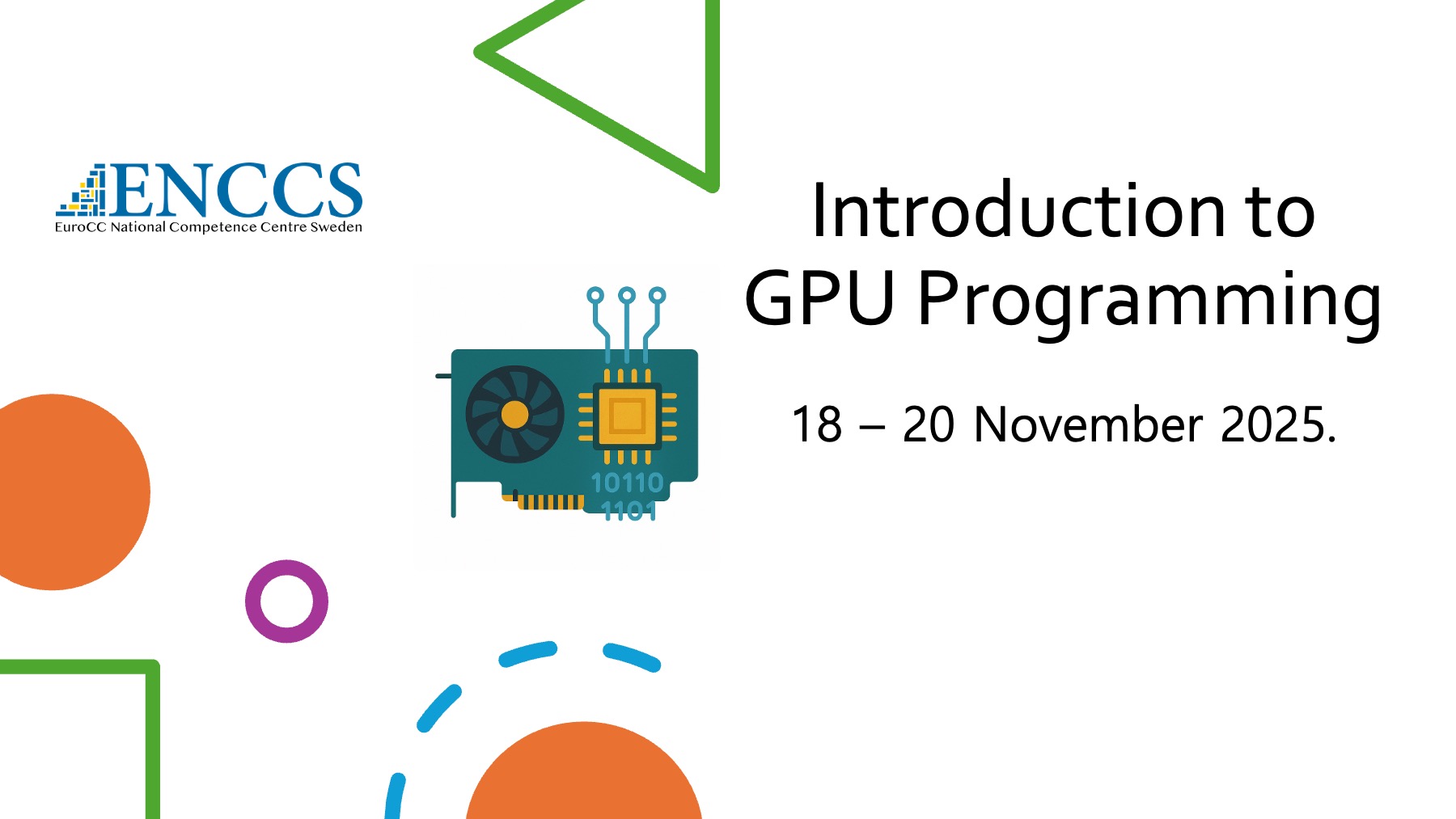EuroCC2's national competence center in Sweden (ENCCS) is hosting an online introductory GPU programming course from 18 to 20 November 2025. This webinar is especially useful for early-career researchers and engineers working on CPU-based software for workstations or supercomputers. It also benefits decision-makers and project leaders who may not code but oversee software projects across academia, industry, or the public sector. Additionally, a follow-up workshop will be held from 25 to 27 November 2025, offering a more in-depth look at GPU programming. More details will be shared soon.
Graphics Processing Units (GPUs) drive many of the world’s high-performance computing (HPC) systems. Today, most of the computing power available to researchers and engineers in HPC comes from GPUs or similar accelerators. As a result, learning how to program GPUs has become more important for developers working on HPC software.
However, the GPU ecosystem is intricate, with multiple vendors competing in the high-end market, each offering unique software stacks and development tools. Additionally, a wide range of programming languages, libraries, and frameworks exist for GPU programming. This diversity complicates the decision-making process for developers and project leads, who must select the appropriate tools and frameworks tailored to their project needs, all while considering technical demands and existing codebases.
This webinar series offers a practical introduction to GPU programming, tailored for developers, researchers, and engineers interested in leveraging GPUs for high-performance computing and data-intensive applications. Across three focused webinars, participants will develop a solid understanding of the importance of GPUs, the basics of GPU architectures, the types of problems best suited for GPU solutions, and how to start using GPU programming models.
Participants in both sessions will engage with the LUMI supercomputer for practical exercises. After registering for the workshop, you will receive instructions on accessing the LUMI system during the onboarding session.

